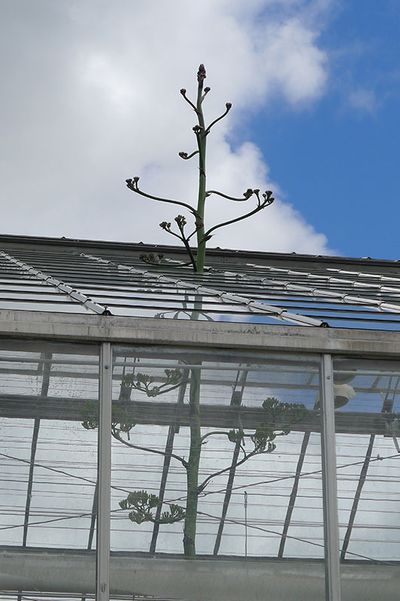Agave plant’s one-time bloom appears near

ANN ARBOR, Mich. – An 80-year-old American agave plant that will flower once then die is about to do the former. Probably.
Housed at the University of Michigan since 1934, the plant has grown so rapidly since the spring that at more than 27 feet it is now too tall for the Ann Arbor conservatory, which has had to remove a pane of glass to accommodate it.
Just this week, one of the asparagus cousin’s flower buds took on an orange-like blush. Could that mean the buds are ready to finally bloom?
The agave began to shoot upward in April, at which point a volunteer pointed out a flower stalk to horticulture manager Mike Palmer.
Since then, it has grown as much as 6 inches a day and forced workers to remove the glass to make room for its rapid ascent. Palmer called the pre-branching version of the plant “a giant asparagus on steroids.”
The variegated American agave (Agave americana) was collected in Mexico by famed ethno-botanist Alfred Whiting, who then was a University of Michigan graduate student. Known as the century plant because it blooms infrequently, it is native to Mexico and the American Southwest and typically lives 10 to 25 years in the wild before blooming a single time then dying.
It’s a mystery why this agave stuck around for eight decades, Palmer said.
“We don’t know why it waited so long,” he said.
Once the flower blooms it will take many months before the plant dies. But in the plant’s final throes, it is expected to produce “pups,” or genetic clones that look the same as the parent plant, from which conservatory workers can propagate the species.
“If we can get even one pup, we’ll plant it,” said Joe Mooney, spokesman for the conservatory.